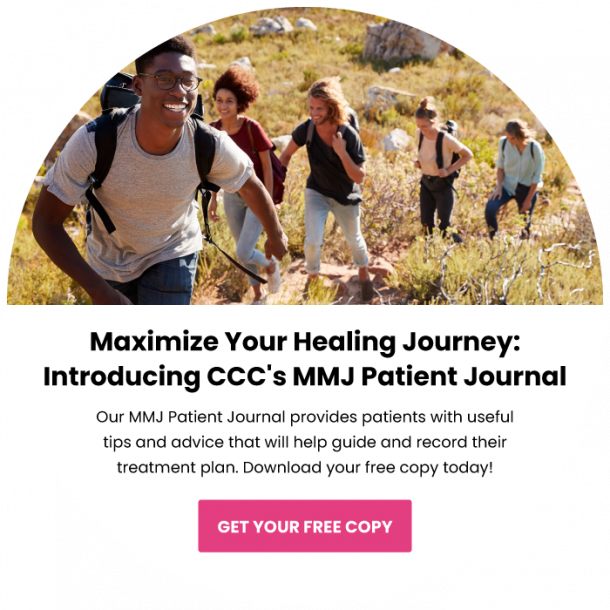The Israel National Institute For Health Policy Research has provided us with a copy of the initial results from the study Health Utilization and Characterization of Patients Using Medical Cannabis in Israel. Here are the real facts of the study:
Israel is seeing a significant increase in the use of medical cannabis. The law approves its use for non-cancer and cancer pain, nausea and lack of appetite in cancer patients, multiple sclerosis, epilepsy, inflammatory bowel disease and more. The number of licensed users in Israel currently reaches over 23,500 users. It was observed that no evaluation or follow-up of these patients was taking place.
The objective of the study was to follow-up with new users of medical cannabis, and only those who were medicating for pain, for four months to determine and characterize:
- socio-demographic and disease profile
- indications for cannabis prescription
- methods of administration
- exposure and dose
- past treatments up until cannabis authorization
- long-term side-effects and safety
- compliance and drop-out
- effectiveness of treatment in accordance with initial indications
213 patients were interviewed (65 of them cancer patients). The majority of patients had tried different treatment before cannabis and decided to give cannabis a try due to side effects or lack of efficiency of other treatments.
79.9% of cancer patients and 67.1% of non-cancer patients reported a variety of side effects, with the most frequent being hunger, dry mouth, elevated mood and tiredness.
79 non-cancer patients (interviewed eight months after approval) indicated a decrease in the worst pain reported in the last 24 hours from 8.5±1.6 before treatment to 7.1±2.7 in the first interview and 6.7±2.8 in the second interview (p<0.0001).
Only 9% of the patients reported on the first interview that they had stopped using medical cannabis.
The study concluded that monitoring of medical cannabis use is essential and will influence the future decision about this scientifically controversial issue, and that evaluating outcomes of medical cannabis has important health policy implications and should be a priority for policymakers.
The 6th International Jerusalem Conference on Health Policy, held May 23-25, provided a platform for exploring the dynamic evolution of health policy worldwide and acknowledging its complex, uncertain and interactive nature. Pesach Shvartzman, one of Israel’s leading family physicians and a prominent expert in both pain control and palliative medicine, took this opportunity to unveil the findings of an “unprecedented” cannabis study he has been heading since the latter part of 2013.
The study was performed to help determine whether patients experience any after-effects from cannabis use, how many of them stop using it and why. “We couldn’t find any similar study in the world,” Schwartzman said. “It’s a rapidly growing business and we need to know what we’re doing to our patients when we give them cannabis.”
Financed by the National Institute for Health Policy Research, and conducted together with Dr. Silvio Brill (who heads the Pain Treatment Unit at Tel Aviv’s Ichilov Hospital and is also chairman of the Israel Pain Association) and Dr. Itai Gur-Arie (the head of the Sheba Medical Center, Tel HaShomer’s Pain Management Unit), the study was to follow new cannabis users for two years. It was also to be based on interviews held with 1,500-2,000 patients who agreed to take part in the project. The premise of the study was to look at their socioeconomic characteristics, disease profiles, the medical indications for use, dosages, treatment given to the patient before giving cannabis, treatment safety, side effects, response and effectiveness of treatment and the patient’s use of health services before and after treatment.
At the Health Policy conference, Shvartzman unveiled results of the study (as outlined in the update above) and concluded that most users experienced significant improvement in pain and function, but that cannabis also caused side effects, with more than 77% reporting side effects, all of which are minor. It is interesting to note here that the majority smoked the cannabis as opposed to ingesting oil or vaporization.
The study revealed the worse side effects of cannabis to be dry mouth and hunger.
The most frequent side effects were dry mouth (60.6%); hunger (60%); high moods (44%); sleepiness (23%); fatigue (28.6%); red eyes (32%); and blurred vision (13%). Let’s compare that to prescription drugs. Side effects of prescription drugs are inevitable, even with federal regulations that oversee these drugs. In fact, each year 4.5 million Americans visit an emergency room or doctor’s office for adverse prescription drug side effects and a startling 2 million other patients who are already hospitalized suffer the ill effects of prescription drugs even while under the care of medical professionals. This includes death, physical debilitation, heart conditions, stroke and cancer, just to name a few.
Shvartzman reported that some 42% of all the patients had been referred to medical cannabis by their doctors, while only 24% from a friend or family member. The prescriptions for the drug were most commonly given by palliative medicine specialists, orthopedists and other specialists, and only a tiny minority (0.4%) from the family physician. The majority of the participants (99.6%) sought medical cannabis as a treatment after conventional medications proved ineffective and nearly 56% said they wanted it because the previous drugs caused side effects.
The results of this study are promising, but before medicinal cannabis can be made more widely available and accepted as a viable treatment, even for conditions such as chronic pain in which the evidence of benefit is strongest, governments, businesses and so on will need to be more supportive of research on the medical uses of cannabis and provide the leadership necessary to change how the drug is currently scheduled.
Source: Pesach Shvartzman, MedicalJane
View Original Post

